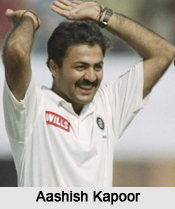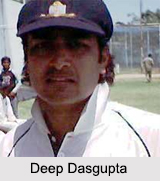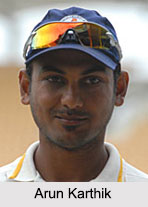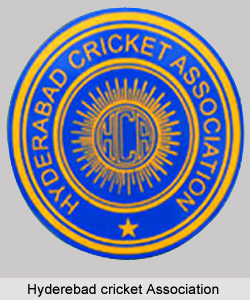 Blind cricket in India is a version of the sport of cricket adapted for blind cricketers. It is for those who are blind and have a great knack in playing cricket.
Blind cricket in India is a version of the sport of cricket adapted for blind cricketers. It is for those who are blind and have a great knack in playing cricket.
Blind cricket is for those who are also partially-sighted players. It has been governed by the World Blind Cricket Council (WBCC) since 1996. So far, four Blind World Cups have been held in New Delhi in the year 1998, Chennai in the year 2002 and Islamabad, Pakistan in the year 2006. In 2012, the first Blind World Cup Twenty 20 was held in Bengaluru. The blind cricket relies on common use of the `sweep shot`, in order to provide maximum chance of the bat hitting the ball.
History of Blind Cricket
 Blind cricket was invented in Melbourne in the year 1922 by two blind factory workers who improvised the game using a tin can containing rocks. The Victorian Blind Cricket Association was founded shortly after, in the year 1922, and the first sports ground and clubhouse for blind cricket was built at Kooyong, Melbourne in the year 1928. It was the world"s first Test Cricket match for the Blind was played which was played between Pakistan and South Africa in which Pakistan Cricket Team defeated South Africa Cricket Team by 94 runs.
Blind cricket was invented in Melbourne in the year 1922 by two blind factory workers who improvised the game using a tin can containing rocks. The Victorian Blind Cricket Association was founded shortly after, in the year 1922, and the first sports ground and clubhouse for blind cricket was built at Kooyong, Melbourne in the year 1928. It was the world"s first Test Cricket match for the Blind was played which was played between Pakistan and South Africa in which Pakistan Cricket Team defeated South Africa Cricket Team by 94 runs.
Blind Cricket World Cup
South Africa Cricket team won first Blind Cricket World Cup in the year 1998 by defeating Pakistan Cricket team in the finals, while Pakistan consecutively won next two Blind Cricket World Cup (BCWC) defeating South Africa and India in the finals in the year 2002 and 2006. In the year 2014, the Blind Cricket World Cup championship was won by Indian Cricket team defeating the two time winner Pakistan Cricket team.
Rules of Playing in Blind Cricket
The WBCC International playing rules are classified in 25 classes. Each class has single or multiple clauses. The rules of blind cricket are based on the standard Laws of Cricket with some essential modifications.
Equipments in Blind Cricket
In terms of playing equipment, the major adaptation is the ball, which is significantly larger than a standard cricket ball and filled with ball bearings. The size of the ball allows partially sighted players to see the ball and the contents allow blind players to hear it. The wicket (stumps) is also larger, to allow partially sighted players to see and blind players to touch it in order to correctly orient themselves when batting or bowling.
Modifications in Blind Cricket
There are various other modifications to the rules that apply. The verbal signals are widely used both by umpires and players: in particular, the bowler must shout `Play!` as he releases the ball. The delivery of the ball is required to pitch at least twice when bowled to a completely blind batsman but must not be rolling. Totally blind batsmen cannot be out stumped, and must be found to be LBW twice before going out. Totally blind fielders are allowed to take a catch on the bounce.
Promotion of Blind Cricket in India
Samarthanam Trust for the Disabled and Cricket Association for the Blind in India is one and only institution which promotes the blind cricket in India. The zonal matches are held by Samarthanam Trust for the Disabled and Cricket Association for the Blind in India and CABI by identifying local partners, including private and government bodies which affiliate with the organizers, lending their support to the tournament. The winners of the zonal matches play league matches to qualify for the finals.






























